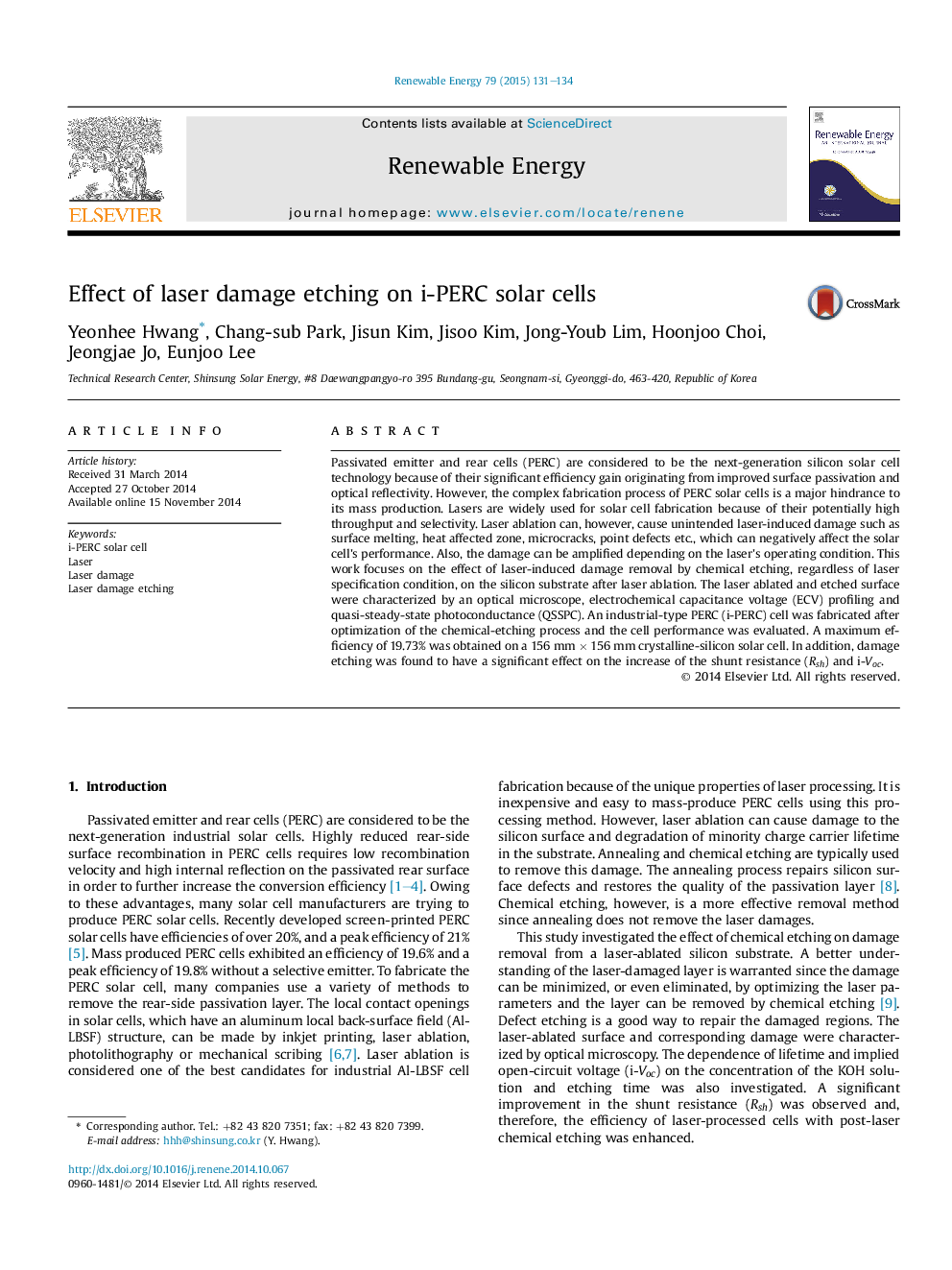| Article ID | Journal | Published Year | Pages | File Type |
|---|---|---|---|---|
| 299933 | Renewable Energy | 2015 | 4 Pages |
•i-PERC cells are one of the next-generation concepts for industrial mass production lines.•Laser ablation can cause unintended laser-induced damage.•The effect of laser-induced damage was removed by chemical etching.•Laser-damage-removal etching improved the i-Voc and shunt resistance (Rsh).•The alkaline etching on contact formation for Al-LBSF silicon-solar cells was investigated.
Passivated emitter and rear cells (PERC) are considered to be the next-generation silicon solar cell technology because of their significant efficiency gain originating from improved surface passivation and optical reflectivity. However, the complex fabrication process of PERC solar cells is a major hindrance to its mass production. Lasers are widely used for solar cell fabrication because of their potentially high throughput and selectivity. Laser ablation can, however, cause unintended laser-induced damage such as surface melting, heat affected zone, microcracks, point defects etc., which can negatively affect the solar cell's performance. Also, the damage can be amplified depending on the laser's operating condition. This work focuses on the effect of laser-induced damage removal by chemical etching, regardless of laser specification condition, on the silicon substrate after laser ablation. The laser ablated and etched surface were characterized by an optical microscope, electrochemical capacitance voltage (ECV) profiling and quasi-steady-state photoconductance (QSSPC). An industrial-type PERC (i-PERC) cell was fabricated after optimization of the chemical-etching process and the cell performance was evaluated. A maximum efficiency of 19.73% was obtained on a 156 mm × 156 mm crystalline-silicon solar cell. In addition, damage etching was found to have a significant effect on the increase of the shunt resistance (Rsh) and i-Voc.
